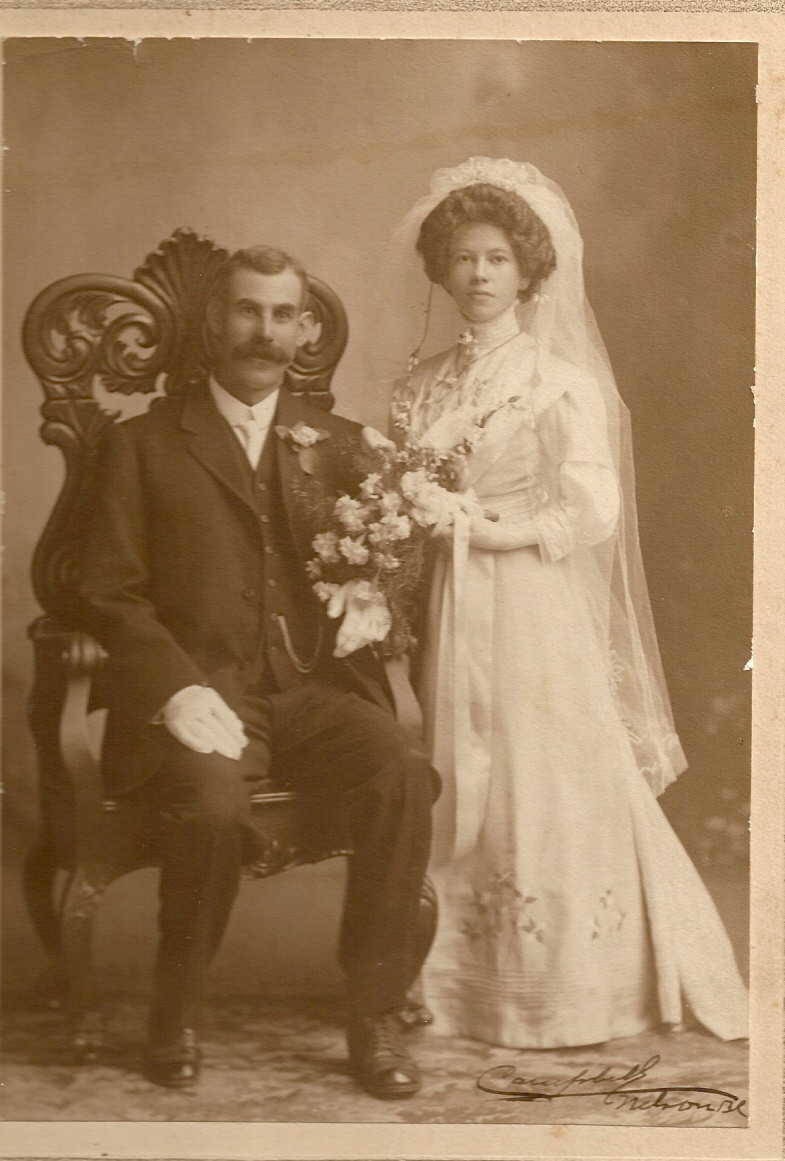A series on West Kootenay/Boundary place names
With this installment, we begin a third trip through the alphabet, looking at ever-more obscure railway points, sternwheeler landings, and phantom townsites.
ADAMSON’S LANDING
This spot on Kootenay Lake near Harrop was named for George Adamson (1865-1951), a stone mason who applied to buy property there with Fred Sammons in March 1906. They received their Crown Grant for Lot 7876 on Sept. 13, 1907.
Adamson’s Landing was never an official name and may not have appeared on the CPR timetable either. But in the Harrop-Procter 2007 Centennial book, Ruth Prosser recalled ripping out some old skirting off her home and discovering a board with “Adamson, Adamson’s Landing” written on it. It turned out she was living in George Adamson’s old house.
Adamson was from Ballydoughan, County Down, Northern Ireland. When he married Bathsheba Blanche Cose (1885-1971) in Nelson on Sept. 27, 1910, he gave his address as Harrop. The 1911 census also listed them at Harrop, living with Blanche’s mother Sophia and brother Boaz. The Adamsons had four children. By 1918, they moved to Saskatchewan, although they eventually returned to BC.
AIREY’S
Airey’s Landing was an alternate name for Cedar Point, on Kootenay Lake’s North Shore, previously covered in this series. It first showed up in the 1918 BC directory with the note “Now known as Cedar Point,” but persisted after Cedar Point was consigned to oblivion.
It appeared in the 1939 and 1940 BC directories as Aires and was simply listed as “on stage near Nelson” with no residents. That spelling was also used on the 1947 Greyhound schedule, as reproduced in Tom’s Gray Creek, Part 2. The stop was between Willow Point and Crescent Bay.
The namesakes were Thomas Alexander (1875-1952) and Susan Eliot Airey (1877-?), first mentioned in the Nelson Daily Canadian in 1908 as residing at Eight Mile. Thomas was born on the Isle of Man while Susan was born in the US. They had at least four children, Talbot, Dorothy, Edmund, and Richard. On the 1921 census, they were considered Willow Point residents.
ALLANDALE
This subdivision on Lower Arrow Lake, also spelled Allendale, is a little east of Syringa. It first shows up in W.A. Jeffries’ 1914 Nelson City and District Directory. The lone resident was rancher Essex Griffiths.
It was listed in 1918 as Allendale and in 1919 as Allandale, “a Dominion Government long distance telephone office.” The only resident was Abraham Hirst, a rancher who also had the telephone office. Allandale didn’t appear in the directories after that.
Today Allandale is considered a subdivision, although its name is not official. Both spellings are perpetuated in Allandale Creek, officially adopted in 1949, and Allendale Crescent, which runs parallel to Broadwater Road. Regardless of your vowel preference, the name’s origin is unknown.
ANGEL FALLS
This is one of the newest additions to local toponymy, a settlement at the top of the Monashee Pass on Highway 6 between Needles and Vernon. The name was chosen by (Monashee) Bill Wowchuk (1930-2016).
According to a profile in the Arrow Lakes News of April 10, 2003, Wowchuk was wowed by the area and bought property there in 1978. He travelled back and forth from Calgary but became a full-time resident in 1992. He planted gardens and erected several buildings, including cabins and an ice cream stand, and enjoyed welcoming visitors.
Prior to Wowchuk’s arrival, there had been a gas station, cafe, and cabins in the area operated by a Ralston family, but when he arrived only some foundations remained.
Although the name is widely used, Angel Falls is not officially recognized as a community or waterfall.
ARCHER
Listed on the CPR’s 1916 timetable as a landing on Kootenay Lake between Twin Bay and Mirror Lake. It appeared in the 1918 BC directory as “a settlement near Kaslo.” The only resident was W. Drage, a rancher. By 1922, there were no residents, and it was dropped from the directory after 1924.
The namesakes were likely Frederick Ebenezer Archer (1859-1957), mayor of Kaslo for more than 12 years between 1903 and 1942, and his wife Jean Moyer Dryborough Archer (1860-1933).
It’s not obvious, however, what connection they had to this particular spot.
ARCHIBALD
This stop on the CPR’s North Fork subdivision was 32 km north of the US-Canada border at Carson. According to Roger Burrows in Railway Mileposts: British Columbia, Vol. II, “Once the site of the Rock Candy fluorite mine, this station was likely named for W.M. Archibald, a CM&S superintendent of mines.”
William Munroe Archibald (1876-1949) was born in Halifax and completed an engineering degree at McGill University. He joined the Consolidated Mining and Smelting Co. in Trail in 1901, where he rose to become superintendent. He pioneered the use of aircraft in mining exploration and was named to Canada’s Aviation Hall of Fame in 1973.
The Grand Forks Sun recorded him visiting the Rock Candy mine several times in the 1910s and ‘20s. The name first appeared in the 1922 Wrigley’s directory as “a station on the Carson-Lynch Creek branch of the Kettle Valley Ralway, 25 miles from Carson.” It was last listed in 1937.
